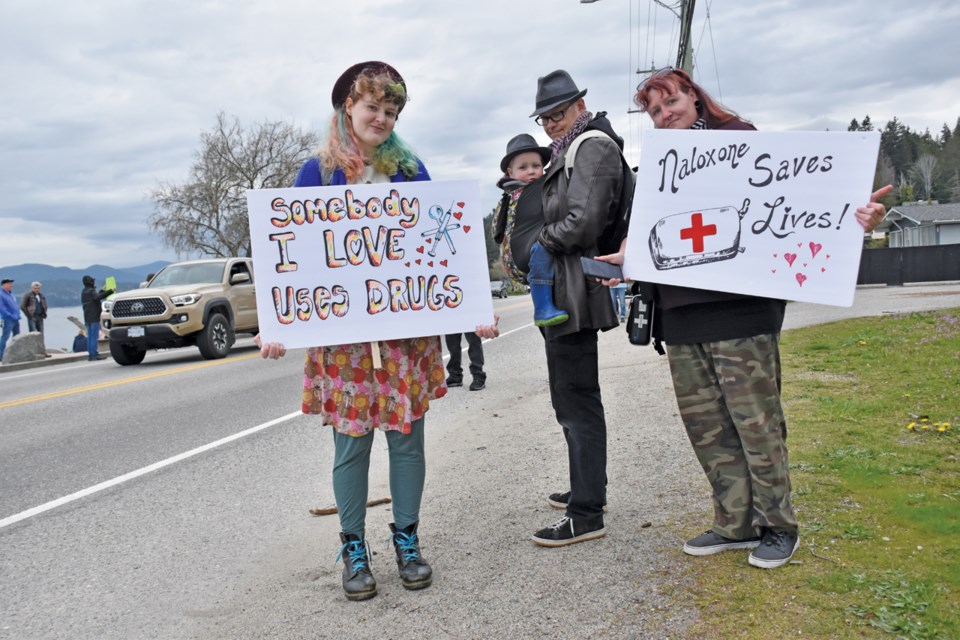The third anniversary of B.C.’s declaration of a public health emergency to combat the rising number of drug-related deaths and overdoses was acknowledged across Canada, and in a sombre memorial at the Davis Bay Pier on April 16.
“It’s really important that rural communities like this don’t get forgotten,” said Hawkfeather Peterson, one of the local organizers of the National Day of Action on the Overdose Crisis, which was also observed in Vancouver, Calgary, Saskatoon, Toronto, Montreal and several other Canadian cities.
The event, which used to take place in February, was moved to the anniversary of the emergency declaration this year to draw attention to the need for action, said Peterson, who called the crisis a public health issue and wants the federal government to guarantee a safe drug supply, funding for safe consumption sites, decriminalization and the declaration of a health emergency at the federal level.
In 2016, 991 people died from overdoses in B.C. That number climbed to 1,510 in 2018. There are no recent statistics on the number of overdoses and deaths on the Sunshine Coast due to a change in how Vancouver Coastal Health (VCH) reports its numbers. In 2018, it had the third highest per capita rate of deaths in the VCH region.
Assisting with the memorial was the Sunshine Coast Community Action Team (CAT), a provincially-funded multidisciplinary group with a mandate to address the needs of drug users, reduce stigma and decrease overdose risk.
Rural needs aren’t always considered by policy makers, said Peterson, an “out” drug user and member of CAT. For example, the Sunshine Coast would need a different type of safe injection site than those in cities because populations are spread out, and there is less anonymity in smaller communities.
Kenn Quayle and Brian MacKenzie, CAT members who also do outreach work on the Coast through the i2i Peer Support Project, said stigma was a primary concern for them when they began their work a year ago.
“When we first started we were worried about what the community reaction was going to be to us coming out as drug users publicly,” Quayle said.
While some drug users want to remain private, they said many others are happy for the opportunity to share their experiences.
Other needs identified are resources for families who have lost loved ones to an overdose, and the need for regular drug checking, since toxic supplies tend to linger in the community.
Before the moment of silence, Peterson told the crowd when the days of action started three years ago, people were encouraged to say the names of those they lost.
“I can’t do that any more,” Peterson said. “I have too many names.”



